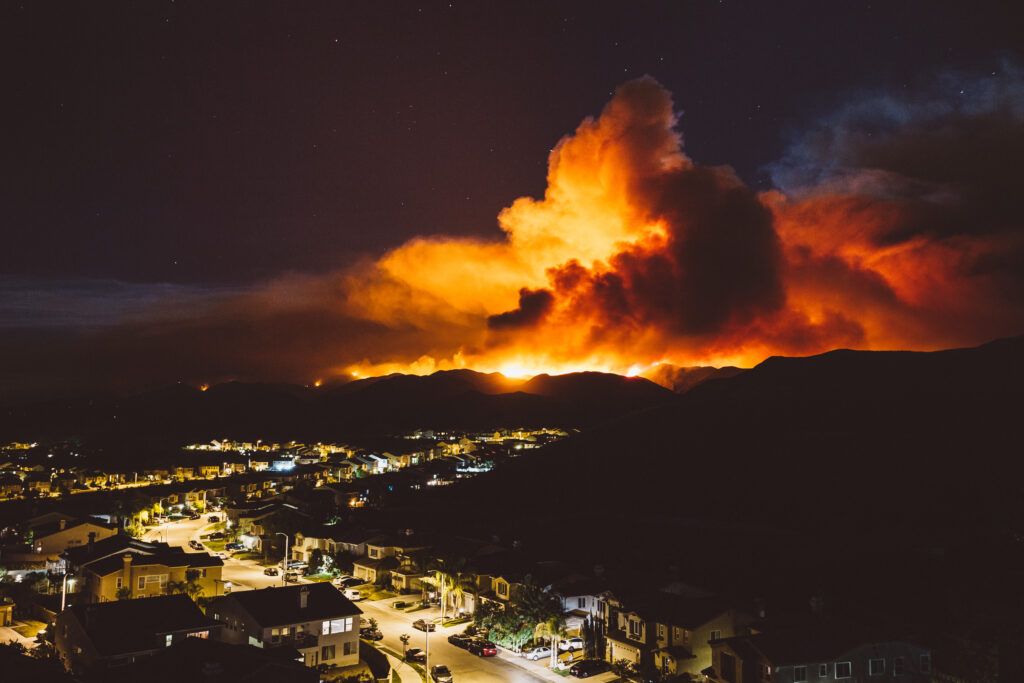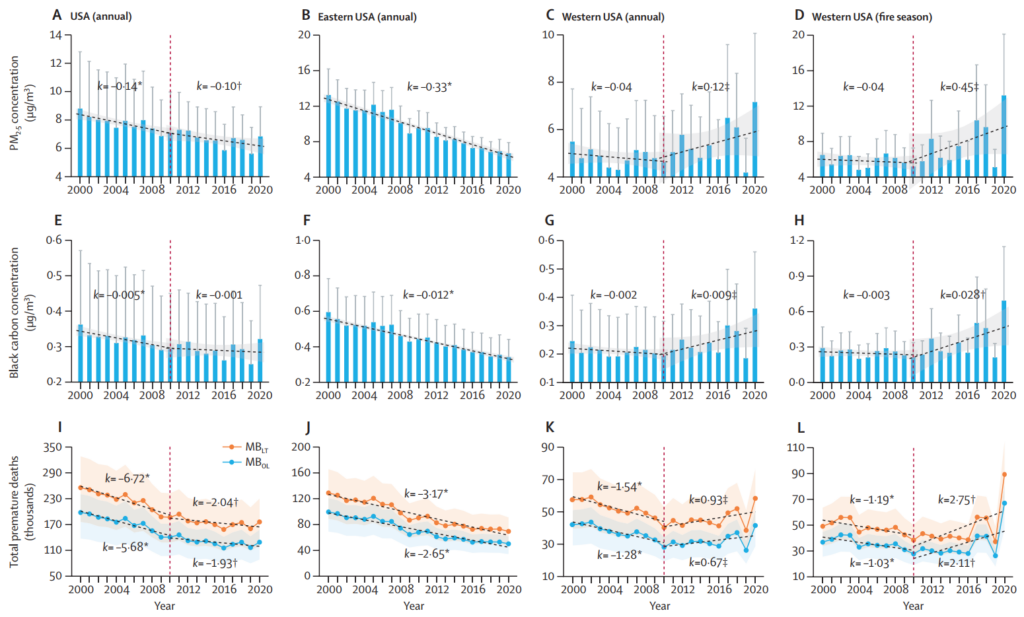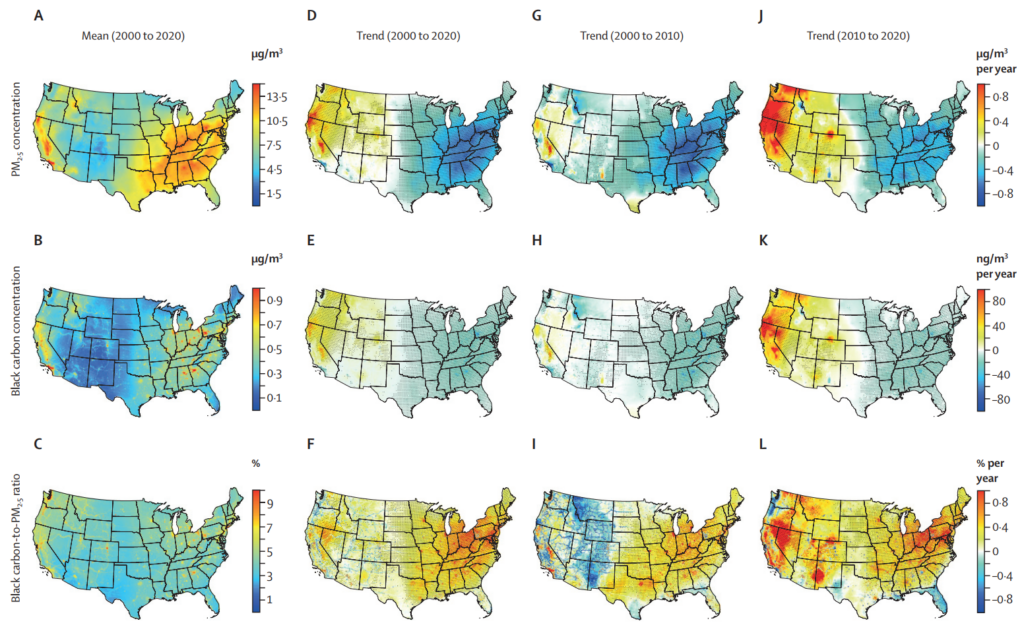UMD researchers analyzed changes in the mortality burden attributed to wildfire pollution over the last two decades.

The increasing number and intensity of wildfires in the Western U.S. are overshadowing human-caused emission reductions, aggravating air pollution, and increasing disease and mortality, according to a new study led by researchers at the University of Maryland’s Earth System Science Interdisciplinary Center (ESSIC). Published in The Lancet Planetary Health, the paper analyzes the long-term relationship between mortality, black carbon—a sooty chemical emitted from wildfires—and PM2.5, fine particulate matter that can be breathed into your lungs.
“Air pollution, particularly PM2.5 pollution, stands as a globally significant environmental hazard, exerting profound effects on air quality, climate change, and, most critically, human health. The sources of PM2.5 pollution are intricate,” says Assistant Research Scientist Jing Wei, who started this work during his time at the University of Iowa and holds a joint appointment in ESSIC and UMD’s Department of Atmospheric and Oceanic Science (AOSC). “The recent surge in widespread wildfires in the U.S. has brought about changes in air quality, impacting human health, especially given the heightened toxicity of black carbon.”
Both black carbon and fine particulate matter have been associated with a wide variety of diseases. Prolonged exposure to PM2.5 has been linked to cancer, heart disease, asthma and birth complications. Specific research on the health impacts of black carbon is sparse, but the mortality risk is reported to be up to 10 times higher than PM2.5. Together, the substances pose a substantial risk to human health.
Knowing this health impact, many countries have embraced efforts to decrease human-caused emissions that release these harmful chemicals. Legislation like the U.S. Clean Air Act helped lower PM2.5 substantially across the U.S. However, Wei found that the increasing wildfires in the Western U.S. considerably undermined the reductions in PM2.5 achieved by the Clean Air Act.
Wei and his team used deep learning and aerosol measurements from both space and the surface over the U.S. to derive daily 1-km PM2.5 and black carbon concentrations from 2000 to 2020 over the continental U.S. Using this new dataset, the researchers assessed changes in mortality burden attributed to fine particle pollution (especially black carbon) during the last two decades. They focused on identifying any disruptions in the otherwise-decreasing trends that could be attributed to emissions from wildfires.
They found that PM2.5 and black carbon decreased nationally by 22% and 11%, respectively, from 2000 to 2020, leading to a reduction in premature deaths of approximately 4,200 people per year. However, since 2010, fine particles and premature death have reversed to increase in the Western U.S. while remaining mostly unchanged in the Eastern U.S. The researchers observed a 55% increase in PM2.5 concentrations in the Western U.S. over the study period, resulting in an estimated annual mortality rate of around 670 people. Taking into consideration the greater toxicity of black carbon, this number rises to approximately 930 people.
Across the U.S., the researchers found that the proportion of black carbon within PM2.5 rose by 2.4% per year during the last two decades. This also indicates an increase in the relative toxicity of PM2.5.


“While it sounds like a very small change, the mortality associated with the widespread smoke is a lot more than the number of direct fire casualties that have been widely reported in the media”, says study co-corresponding author Zhanqing Li, a Distinguished University Professor with a joint appointment in ESSIC and AOSC.
Wei and his co-authors insist that reducing climate warming, and thus fire occurrence, should be an integral part of environmental protection for the sake of public health.
“Reducing fire risk via effective policies, besides mitigation of climate warming, wildfire prevention and management, forest restoration and new revenue generation, can hold the potential to substantially improve air quality and public health in the coming decades,” Wei says.
Jun Wang, from the University of Iowa, is a co-corresponding author. Contributing authors include Shobha Kondragunta, from the National Oceanic and Atmospheric Administration’s STAR Center for Satellite Applications and Research; Susan Anenberg, from George Washington University; Yi Wang and Huanxin Zhang, from the University of Iowa; David Diner, from the California Institute of Technology and NASA Jet Propulsion Lab; Jenny Hand, from Colorado State University; Alexei Lyapustin, Ralph Kahn, Peter Colarco, and Arlindo da Silva, from NASA Goddard Space Flight Center; and Charles Ichoku, from the University of Maryland-Baltimore County.
The study has been chiefly funded by grants from NASA to the University of Maryland and University of Iowa.





